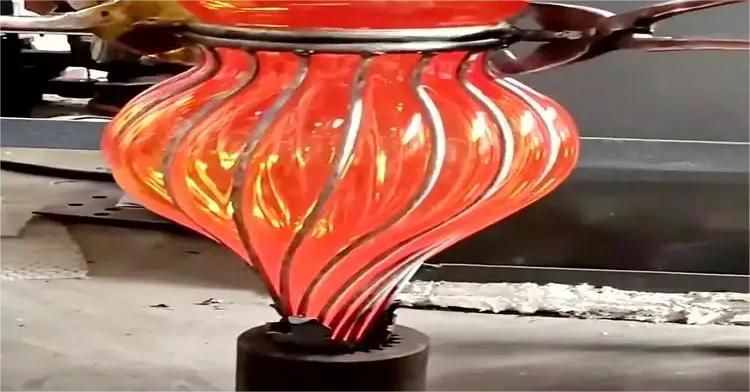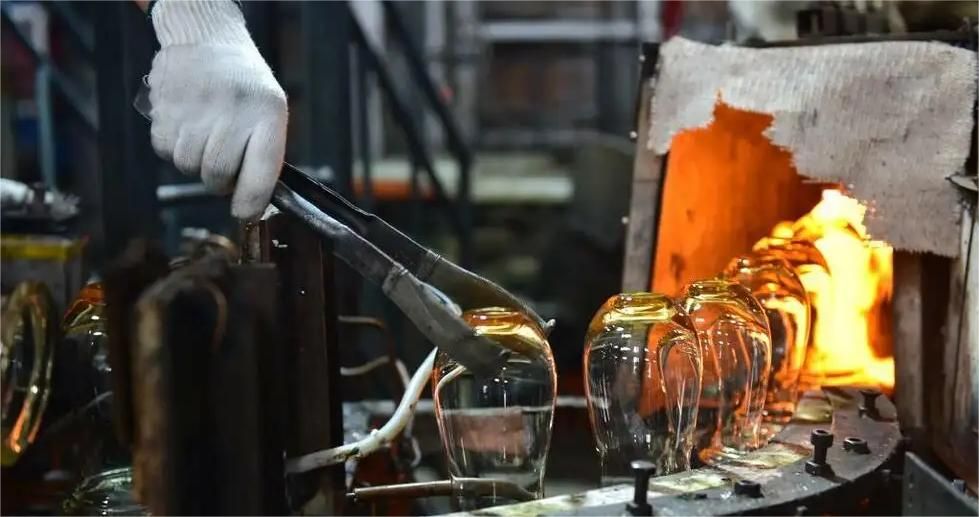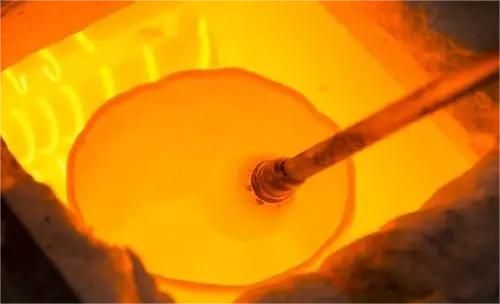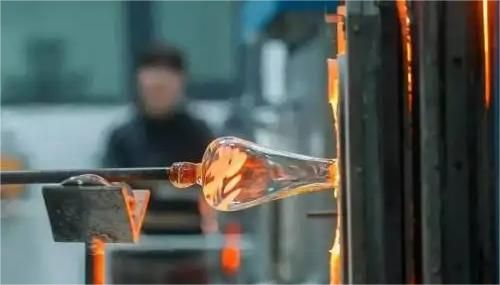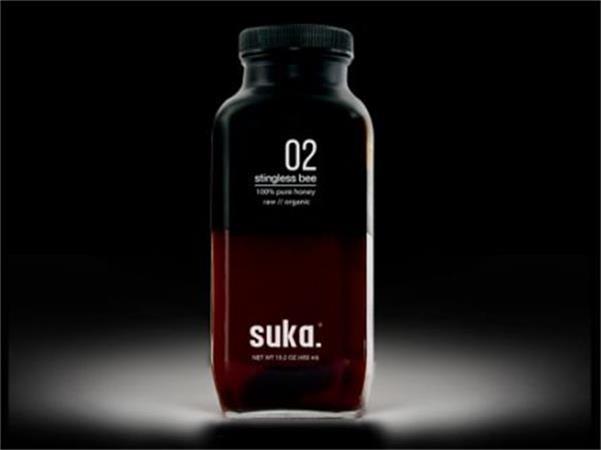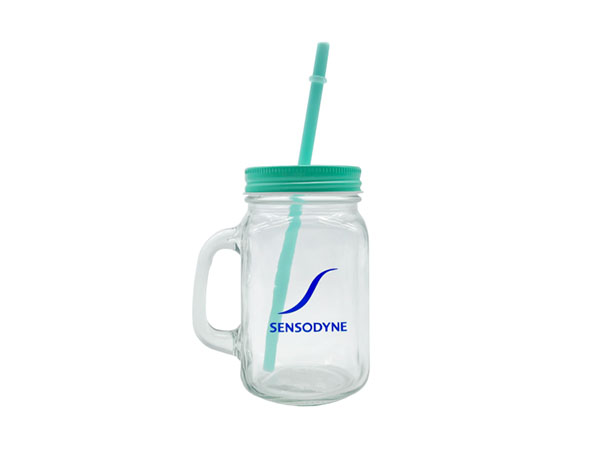Glass has good transmission and light transmission performance, high chemical stability, and can obtain strong mechanical strength and heat insulation effect according to different processing methods. It can even make glass change color independently and isolate excessive light, so it is often used in all walks of life to meet different needs.This article mainly discusses the manufacturing process of glass bottles。
Of course, there are reasons for choosing glass to make bottles for beverages, which is also the advantage of glass bottles.The main raw materials of glass bottles are natural ores, quartzite, caustic soda, limestone, etc. Glass bottles have high transparency and corrosion resistance, and will not change the material properties when contacting with most chemicals. Its manufacturing process is simple, modeling is free and changeable, hardness is large, heat resistant, clean, easy to clean, and can be used repeatedly. As a packaging material, glass bottles are mainly used for food, oil, alcohol, beverages, condiments, cosmetics and liquid chemical products and so on.
The glass bottle is made of more than ten kinds of main raw materials, such as quartz powder, limestone, soda ash, dolomite, feldspar, boric acid, barium sulfate, mirabilite, zinc oxide, potassium carbonate and broken glass. It is a container made by melting and shaping at 1600 ℃. It can produce glass bottles of different shapes according to different molds. Because it is formed at high temperature, it is non-toxic and tasteless. It is the main packaging container for food, medicine and chemical industries. Next, the specific use of each material will be introduced.
Quartz powder: It is a hard, wear-resistant and chemically stable mineral. Its main mineral component is quartz, and its main chemical component is SiO2. The color of quartz sand is milky white, or colorless and translucent. Its hardness is 7. It is brittle and has no cleavage. It has a shell like fracture. It has grease luster. Its density is 2.65. Its bulk density (20-200 mesh is 1.5). Its chemical, thermal and mechanical properties have obvious anisotropy, and it is insoluble in acid, It is soluble in NaOH and KOH aqueous solution above 160 ℃, with a melting point of 1650 ℃. Quartz sand is the product whose grain size is generally on the 120 mesh sieve after the quartz stone mined from the mine is processed. The product passing 120 mesh sieve is called quartz powder. Main applications: filter materials, high-grade glass, glass products, refractories, smelting stones, precision casting, sand blasting, wheel grinding materials.
Limestone: calcium carbonate is the main component of limestone, and limestone is the main raw material for glass production. Lime and limestone are widely used as building materials and are also important raw materials for many industries. Calcium carbonate can be directly processed into stone and burnt into quicklime.
Soda ash: one of the important chemical raw materials, is widely used in light industry, daily chemical industry, building materials, chemical industry, food industry, metallurgy, textile, petroleum, national defense, medicine and other fields, as well as in the fields of photography and analysis. In the field of building materials, the glass industry is the largest consumer of soda ash, with 0.2 tons of soda ash consumed per ton of glass.
Boric acid: white powder crystal or triclinic axial scale crystal, with a smooth feel and no odor. Soluble in water, alcohol, glycerin, ether and essence oil, the aqueous solution is weakly acidic. It is widely used in glass (optical glass, acid resistant glass, heat-resistant glass, and glass fiber for insulating materials) industry, which can improve the heat resistance and transparency of glass products, improve the mechanical strength, and shorten the melting time. Glauber's salt is mainly composed of sodium sulfate Na2SO4, which is a raw material for introducing Na2O. It is mainly used to eliminate SiO2 scum and acts as a clarifier.
Some manufacturers also add cullet to this mixture.Some manufacturers will also recycle the glass in the production process.Whether it is the waste in the manufacturing process or the waste in the recycling center, 1300 pounds of sand, 410 pounds of soda ash and 380 pounds of limestone can be saved for each ton of glass recycled. This will save manufacturing costs, save costs and energy, so that customers can get economic prices on our products.
After the raw materials are ready, the production process will begin.The first step is to melt the raw material of glass bottle in the furnace,Raw materials and cullet are continuously melted at high temperature. At about 1650 ° C, the furnace operates 24 hours a day, and the raw material mixture forms molten glass about 24 hours a day. Molten glass passing through.Then, at the end of the material channel, the glass flow is cut into blocks according to the weight, and the temperature is set accurately.
There are also some precautions when using the furnace.The tool for measuring the thickness of the raw material layer of the molten pool must be insulated.In case of material leakage, cut off the power supply as soon as possible.Before the molten glass flows out of the feeding channel, the grounding device shields the voltage of the molten glass to the ground to make the molten glass uncharged. The common method is to insert molybdenum electrode into the molten glass and ground the molybdenum electrode to shield the voltage in the molten glass of the gate. Note that the length of the molybdenum electrode inserted into the molten glass is greater than 1/2 of the runner width.In case of power failure and power transmission, the operator in front of the furnace must be informed in advance to check the electrical equipment (such as electrode system) and the surrounding conditions of the equipment once. Power transmission can be carried out only after there is no problem.In case of an emergency or accident that may seriously threaten personal safety or equipment safety in the melting zone, the operator shall quickly press the "emergency stop button" to cut off the power supply of the entire electric furnace.The tools for measuring the thickness of raw material layer at the feed inlet must be provided with thermal insulation measures.At the beginning of the electric furnace operation of the glass furnace, the electric furnace operator shall check the electrode softened water system once an hour and immediately deal with the water cut off of individual electrodes.In case of material leakage accident in the electric furnace of glass furnace, the power supply shall be cut off immediately, and the material leakage shall be sprayed with high-pressure water pipe immediately to solidify the liquid glass. At the same time, the leader on duty shall be informed immediately.If the power failure of the glass furnace exceeds 5 minutes, the molten pool must operate according to the power failure regulations.When the water cooling system and air cooling system give an alarm, someone must be sent to investigate the alarm immediately and deal with it in a timely manner.
The second step is to shape the glass bottle.The forming process of glass bottles and jars refers to a series of action combinations (including mechanical, electronic, etc.) that are repeated in a given programming sequence, with the goal of manufacturing a bottle and jar with a specific shape as expected. At present, there are two main processes in the production of glass bottles and jars: the blowing method for narrow bottle mouth and the pressure blowing method for large caliber bottles and jars.In these two molding processes, the molten glass liquid is cut by the shear blade at its material temperature (1050-1200 ℃) to form cylindrical glass droplets, It is called "material drop". The weight of the material drop is enough to produce a bottle. Both processes start from the shearing of the glass liquid, the material drop under the action of gravity, and enter the initial mold through the material trough and the turning trough. Then the initial mold is tightly closed and sealed by the "bulkhead" at the top.In the blowing process, the glass is first pushed down by the compressed air passing through the bulkhead, so that the glass at the die is formed; Then the core moves down slightly, and the compressed air passing through the gap at the core position expands the extruded glass from bottom to top to fill the initial mold. Through such glass blowing, the glass will form a hollow prefabricated shape, and in the subsequent process, it will be blown again by compressed air in the second stage to get the final shape.
The production of glass bottles and jars is carried out in two main stages: in the first stage, all the details of the mouth mold are formed, and the finished mouth includes the inner opening, but the main body shape of the glass product will be much smaller than its final size. This semi formed glass products are called parison. In the next moment, they will be blown into the final bottle shape.From the angle of mechanical action, the die and the core form a closed space below. After the die is filled with glass (after flapping), the core is slightly retracted to soften the glass in contact with the core. Then the compressed air (reverse blowing) from bottom to top passes through the gap under the core to form the parison. Then the bulkhead rises, the initial mold is opened, and the turning arm, together with the die and parison, is turned to the molding side.When the turning arm reaches the top of the mold, the mold on both sides will be closed and clamped to wrap the parison. The die will open slightly to release the parison; Then the turning arm will return to the initial mold side and wait for the next round of action. The blowing head drops to the top of the mold, compressed air is poured into the parison from the middle, and the extruded glass expands to the mold to form the final shape of the bottle.In the pressure blowing process, the parison is no longer formed by compressed air, but by extruding glass in the confined space of the primary mold cavity with a long core. The subsequent overturning and final forming are consistent with the blowing method. After that, the bottle will be clamped out of the forming mold and placed on the bottle stop plate with bottom-up cooling air, waiting for the bottle to be pulled and transported to the annealing process.
The last step is annealing in the glass bottle manufacturing process.Regardless of the process, the surface of blown glass containers is usually coated after molding
When they are still very hot, in order to make bottles and cans more resistant to scratching, this is called hot end surface treatment, and then glass bottles are taken to the annealing furnace, where their temperature recovers to about 815 ° C, and then decreases gradually to below 480 ° C. This will take about 2 hours. This reheating and slow cooling eliminates the pressure in the container. It will enhance the firmness of naturally formed glass containers. Otherwise, the glass is easy to crack.
There are also many matters needing attention during annealing.The temperature difference of the annealing furnace is generally uneven. The temperature of the section of the annealing furnace for glass products is generally lower near the two sides and higher at the center, which makes the temperature of the products uneven, especially in the room type annealing furnace. For this reason, when designing the curve, the glass bottle factory should take a value lower than the actual allowable permanent stress for the slow cooling rate, and generally take half of the allowable stress for calculation. The allowable stress value of ordinary products can be 5 to 10 nm/cm. The factors affecting the temperature difference of annealing furnace should also be considered when determining the heating speed and fast cooling speed. In the actual annealing process, the temperature distribution in the annealing furnace should be checked frequently. If a large temperature difference is found, it should be adjusted in time. In addition, for glassware products, a variety of products are generally produced at the same time. When placing products in the annealing furnace, some thick wall products are placed at higher temperatures in the annealing furnace, while thin wall products can be placed at lower temperatures, which is conducive to the annealing of thick wall products.Annealing problem of different thick wall products The inner and outer layers of thick wall products are stable. Within the return range, the higher the insulation temperature of thick wall products, the faster the relaxation of their thermoelastic stress when cooling, and the greater the permanent stress of the products. The stress of products with complex shapes is easy to concentrate [such as thick bottoms, right angles and products with handles], so like thick wall products, the insulation temperature should be relatively low, and the heating and cooling speed should be slower.Annealing problem of different types of glass If the glass bottle products with different chemical compositions are annealed in the same annealing furnace, the glass with low annealing temperature should be selected as the heat preservation temperature, and the method of prolonging the heat preservation time should be adopted, so that the products with different annealing temperatures can be annealed as much as possible. For products with the same chemical composition, different thicknesses and shapes, when annealed in the same annealing furnace, the annealing temperature shall be determined according to the products with small wall thickness to avoid deformation of thin-walled products during annealing, but the heating and cooling speed shall be determined according to the products with large wall thickness to ensure that thick wall products will not crack due to thermal stress.The retrogression of borosilicate glass For Pengsilicate glassware products, the glass is prone to phase separation within the annealing temperature range. After phase separation, the glass structure changes and its performance changes, such as the chemical temperature property decreases. In order to avoid this phenomenon, the annealing temperature of borosilicate glass products should be strictly controlled. Especially for glass with high boron content, the annealing temperature should not be too high and the annealing time should not be too long. At the same time, repeated annealing should be avoided as much as possible. The phase separation degree of repeated annealing is more serious.
There is another step to produce glass bottles. The quality of glass bottles should be checked according to the following steps.Quality requirements: glass bottles and jars shall have certain performance and meet certain quality standards.
Glass quality: pure and even, without sand, stripes, bubbles and other defects. Colorless glass has high transparency; The color of colored glass is uniform and stable, and it can absorb light energy of a certain wavelength.
Physical and chemical properties: It has certain chemical stability and does not react with the contents. It has certain seismic resistance and mechanical strength, can withstand heating and cooling processes such as washing and sterilization, and can withstand filling, storage and transportation, and can remain intact in case of general internal and external stress, vibration and impact.
Molding quality: maintain certain capacity, weight and shape, even wall thickness, smooth and flat mouth to ensure convenient filling and good sealing. No defects such as distortion, surface roughness, unevenness and cracks.
If you meet the above requirements, congratulations. You have successfully produced a qualified glass bottle. Put it into your sales.
Post time: Nov-27-2022 Other Blog

